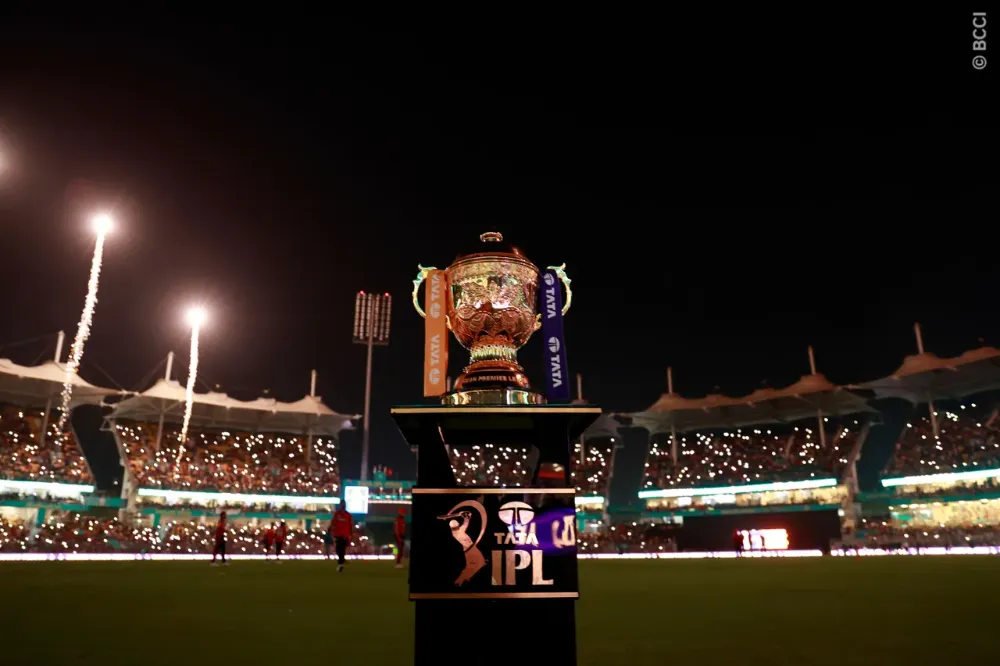Retain or Release: unpacking IPL's new retention rules
The IPL governing body met on Friday to outline rules for the upcoming season. Notable changes include new player retention guidelines, increased match fees for players, and revised regulations for overseas participants, aimed at enhancing competitiveness and ensuring fair play in the league.

With the IPL 2025 season around the corner, franchises are gearing up to make strategic decisions regarding player retention and auction strategies. Here’s a detailed breakdown of the rules and guidelines shaping the tournament’s roster composition, financial structures, and overall auction process.
Retention Rules:
Franchises are allowed to retain up to six players from their current squad through direct retention or the use of Right to Match (RTM) cards. Here's how retention works:
-
Capped Players: A maximum of five capped players (Indian or overseas) can be retained. This means a franchise can have a fully international retention line-up if they choose.
-
Uncapped Players: Up to two uncapped Indian players can also be retained. An uncapped player is defined as an Indian player who has not featured in the starting XI for Test matches, ODIs, or T20Is in the past five calendar years or does not hold a Central Contract with the BCCI. This provision could allow teams to retain iconic players like MS Dhoni as uncapped, thus preserving their auction purse.
Right to Match (RTM) Rules:
Teams can use up to six RTM cards, but the number available depends on how many players are retained before the auction. For instance:
-
If a team retains three players, they will have three RTMs to use during the auction.
-
Unlike previous times, RTMs give franchises a second chance to bring back their players by matching the highest bid during the auction. For instance, if CSK wins the bid for a player and KKR use the RTM, CSK shall get the chance to improve their bid to whatever number they please. However, KKR will get another chance at matching that bid through RTM should they wish to get the player.
Retention Slabs:
According to ESPNCricinfo, the price for retaining capped players has been structured into specific slabs:
-
First Three Retentions: ₹18 crore, ₹14 crore, and ₹11 crore respectively.
-
Next Two Retentions: ₹18 crore and ₹14 crore.
This means a franchise can spend a maximum of ₹75 crore on five capped retentions. For uncapped players, the retention price is fixed at ₹4 crore.
For a franchise retaining six players, including five capped players, they will be left with ₹41 crore for the auction. The total salary cap for the 2025 season has been set at ₹146 crore, a jump from ₹110 crore in 2024.
Auction Purse:
The auction purse for IPL 2025 has been increased to ₹120 crore, allowing franchises to build deeper squads. The overall salary cap includes not just the auction purse but also incremental performance pay and match fees. This cap will rise further to:
-
₹151 crore in 2026
-
₹157 crore in 2027
Match Fees:
For the first time in IPL history, match fees have been introduced for all players, including impact players. Each player will receive ₹7.5 lakh per match and their contracted salary. This change aligns the IPL with international standards, rewarding players for each game they participate in.
Overseas Player Rules:
Overseas players must register for the Big Auction. If they fail to register, they will be ineligible for the following year’s auction. Moreover, any overseas player who withdraws after being picked in the auction will face a two-season ban from participating in the IPL.
Impact Player Rule:
The Impact Player rule continues to be part of the IPL framework for the 2025 to 2027 cycle. Impact substitutes will also be eligible for the new match fees of INR 7.5 Lakhs per match, ensuring they are compensated equally with other players on the field.
With these rules, franchises must carefully balance their retentions, RTM cards, and auction strategies to build the strongest possible squad for the upcoming season.

Comments
Sign up or log in to your account to leave comments and reactions
1 Comments
indira.piu231
Nicely wrote beta. loved it. 🩷
Reply